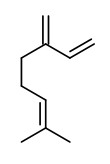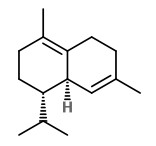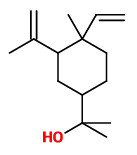Schinus molle L. - Anacardiaceae - Peruvian Mastic Tree, Peruvian peppertree, Californian Pepper Tree, Pink Pepper, Peruanischer Pfefferbaum, Rosa Pfeffer
Tree with pendent, slender branches, up to 7m high, native to South America (from Ecuador to Urugay), cultivated and naturalized elsewhere; leaves pinnate, leaflets linear-lanceolate; flowers yellow; pendant panicles with small pink fruits.
„Although not related to commercial pepper (Piper nigrum) the pink/red berries are sold as pink peppercorns and often blended with commercial pepper… In traditional medicine, S. molle was used in treating a variety of wounds and infections due to its antibacterial and antiseptic properties.“ http://en.wikipedia.org/wiki/Schinus_molle
„The overall organoleptic picture of the oil calls to mind the odor and flvaor of the tail fractions of black pepper oil (the 'heavy' fractions) with some resemblance to angelica seed oil, juniper berry oil and elemi oil. The peppery note is undoubtedly due to the presence in the schinus molle oil of large amounts of the unstable monoterpene, phellandrene, and perhaps also caryophyllene…“
[Arctander, Steffen. Perfume and flavor materials of natural origin, 1960, 583-584]
Main components of the fruit oil of were myrcene (20.4%), α-phellandrene (17.3%), δ-cadinene (9.1%), limonene (7.2%), β-phellandrene (6.2%), and cadinol (6.4%).
[Bernhard, Richard A., et al. „The volatile constituents of Schinus molle L.“ Journal of Agricultural and Food Chemistry 31.2 (1983): 463-466] http://thegoodscentscompany.com/gca/gc1034621.html
Hydrodistilled oil from dried fruits of Schinus molle grown in Turkey contained α-phellandrene (22.1-38.1%), β-phellandrene (10.4-11.8%), limonene (9.6%-11.6%) and α-cadinol (5.6-7.2%) as main constituents and α-pinene (1.0-2.3%), p-cymene (1.8-3.5%), methyl octanoate (3.4-5.2%), terpinen-4-ol/β-caryophyllene (3.5-3.9%), δ-cadinene (3.6-4.0%), octanoic acid (3.8-4.4%) α-cadinol (5.5-7.2%) as minor constituents eg.
Major components of the leaf oil were α-phellandrene (45.7%), β-phellandrene (13.6%) and limonene (13.4%).
[Baser, K. H. C., et al. „Composition of the essential oil of Schinus molle L. grown in Turkey.“ Journal of Essential Oil Research 9.6 (1997): 693-696]
„Supercritical carbon dioxide extraction allowed Schinus molle L. volatile oil to be obtained… The main components were α-phellandrene (26.5%), limonene + β-phellandrene (21.0%), elemol (10.8%) and α-eudesmol (6.1%). Comparison with the hydrodistilled oil (HD) did not reveal any large difference, whereas the significant difference between the SFE and SD oils was the content of sesquiterpenes, which is higher in the SFE products.“
[Chemical composition of the oil and supercritical CO2 extract of Schinus molle L., Marongiu, B., Porcedda, A. P.S., Casu, R., Pierucci, P., Flavour and fragrance journal, Vol.19(6), 2004, 554-558]
In an essential oil obtained by steam distillation from berries of Schinus molle L. (originating from Tunisia) 57 compounds were identified. Main compounds were α-phellandrene (46%), β-phellandrene (20%), α-terpineol (8%), α-pinene (4%), β-pinene (4%) and p-cymene (2%).
[Chemical composition and anticancer and antioxidant activities of Schinus molle L. and Schinus terebinthifolius Raddi berries essential oils., Bendaoud, H., Romdhane, M., Souchard, J.P., Cazaux, S., Bouajila, J., Journal of food science, Vol.75(6), 2010, C466-C472]
„… pink pepper oil, obtained by steam distillation in ca. 5% yield, is much milder, sweeter, and also creamier than black pepper oil, and besides pepper also recalls juniper and elemi… [it] is dominated by 88% of mono- and sesquiterpene hydrocarbons, of which α/β-phellandrene, limonene, myrcene, α/β-pinene and β/δ-elemene make up 90%… The major oxygenated compounds are the sweet, woody-floral β-elemol (6.5%), the sweet, woody smelling α-eudesmol (3.4%), and carotol (1.2%) with its mild, creamy odor. The warm-herbaceous, peppery aspects are due to β-selinene (1.4%), the dry sharp facets of pink pepper oil to α/γ/δ-cadinene (2.3%) and traces of the corresponding alcohols, while p-cymene (1.7%) adds to the overall freshness.“
[Scent and Chemistry, Günther Ohloff, Wilhelm Pickenhagen, Philip Kraft, Wiley-VCH, 2012, 327]
„Extracts were prepared from dried and powdered ripe fruits with solvents (n-hexane, petroleum ether). The oil xtracts were examined by GC-MS. A total of 10 components were identified. The oil extracts of S.molle contained as main components α-phellandrene (24.86% & 22.19%), β-pinene (14.78% & 13.52%), β-phellandrene (11.02 & 10.00%), and limonene (10.58% & 9.34%) in n-hexane and petroleum ether, respectively.“
[Ibrahim, Basil, and Zakaria Al-Naser.„Analysis of fruits Schinus molle extractions and the efficacy in inhibition of growth the fungi in laboratory.“ International Journal of ChemTech Research 6.5 (2014): 2799-2806] http://www.sphinxsai.com/2014/vol6pt5/3/(2799-2806)S-2014.pdf
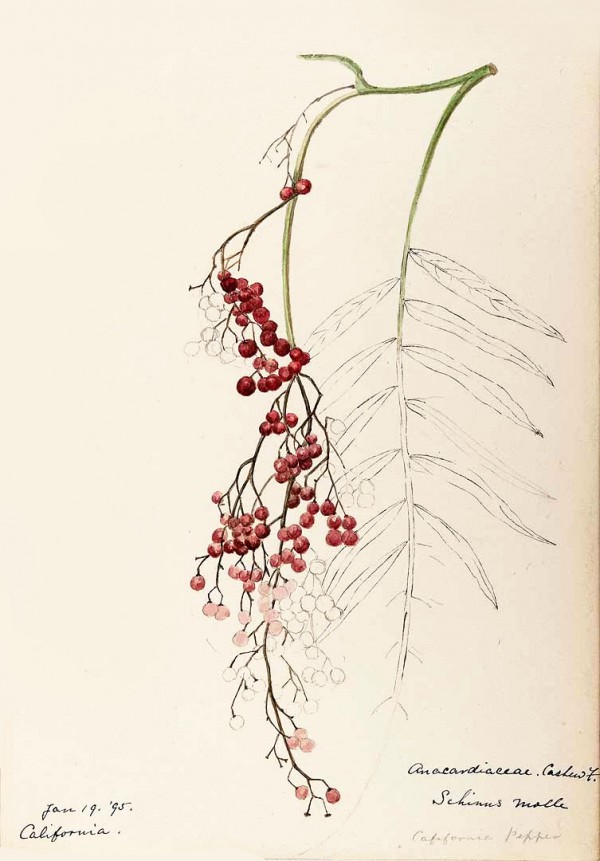
Sharp, Helen, Water-color sketches of American plants, especially New England, (1888-1910)
http://www.plantillustrations.org/species.php?id_species=916603
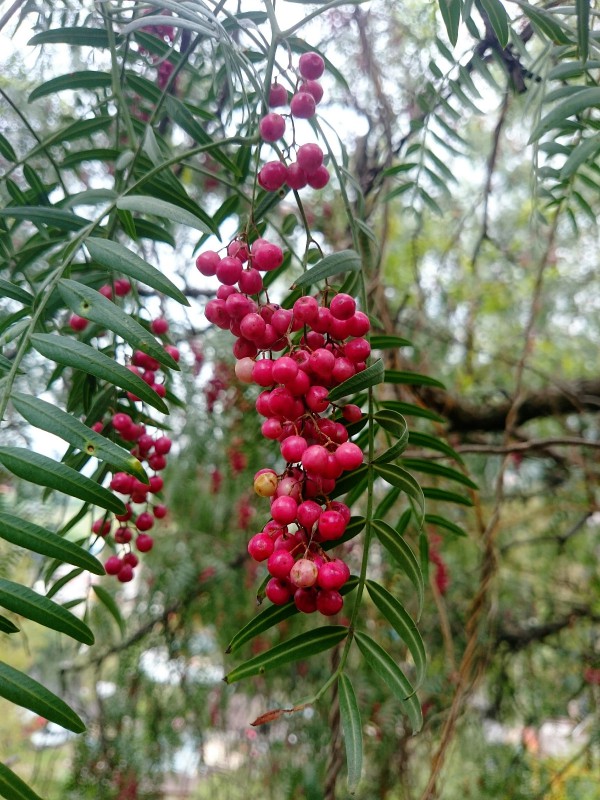
Schinus molle fruits, author Cristofor Ferrandis CC-BY-SA 4.0, Wikimedia Commons

